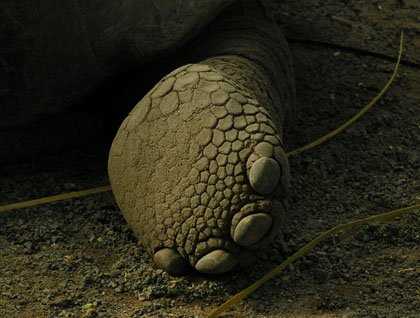The Galapagos Islands are a volcanic oceanic archipelago made up of 13 islands of more than 10 km sq., 19 islands of over 1 km sq., 42 islets smaller than 1km sq. and at least 26 emergent rocks, the whole surface area making up a total of almost 8000 km. The archipelago is highly isolated: located about 960 km to the west of mainland South America, in the middle of the Pacific Ocean. The physical setting of the island group makes it the perfect place for impressive examples of adaptive radiation to have arisen. Adaptive radiation is defined as the “evolution of ecological and phenotypic diversity within a rapidly multiplying lineage,” and occurs when colonists to new areas are completely isolated from the parent population, which rapidly gives rise, through various processes, to new (endemic) species. These new species can subsequently spread to different islands and form yet more new species. Some of the best examples of this phenomenon in Galapagos are the terrestrial Bulimid snails, with 40 species descended from a common ancestor; Darwin finches, with 14 species (15 if one counts the Cocos Island finch) descended from one common ancestor; the 15 plant species of the endemic genus Scalesia; the 14 species of giant tortoise and the multiple different species and subspecies of iguana.
Oceanic island communities are relatively impoverished and very disharmonic in nature (meaning not representative of biotic communities found on the mainland) due to the fact that animals and plants vary greatly in long-distance dispersal abilities. However, they also house some of the strangest and most unique animal and plant species in the world. Reptiles are supremely well-equipped to long-distance travel, with their tough, scaly skin and resilient metabolisms, and thus feature prominently in the Galapagos. In fact, the archipelago gets its very name from an old Spanish word for tortoise, Galápago, given to the islands due to the huge numbers of giant tortoises roaming their arid volcanic landscapes. Now extinct on the South American plains (where they were found during the Pleistocene), these gentle giants are relics of another era, and gradually spread through the islands giving rise to approximately 14 species (genetic studies are still being made), belonging to a closely related species complex named Chelonoidis nigra. The scientific name of the Galapagos tortoises was changed quite recently, the previous name being Geochelone elephantopus, referring to the wonderfully elephantine feet of these reptiles. Many of these species were driven to near extinction over the last few hundred years, as they were removed from the islands by the hundreds of thousands by passing ships, as a source of fresh meat, and then had to face direct predation or competition by introduced mammals such as rats and goats. Over the last 50 years, the Galapagos National Park Service and Charles Darwin Foundation, main stewards of these Enchanted Isles, have worked hard to bring the giant tortoises back from near extinction, using a highly successful captive breeding program that has enabled them to repatriate thousands of young tortoises to their respective islands.
The fourth island we explored on our expedition through the Galapagos was Santa Cruz, and the main objective was to visit the world-famous giant tortoise captive breeding program and learn about the wonderful work being done here. In addition to the tortoises, the GNP and CDF have also run successful land iguana breeding programs in the past, and some of the spectacular male iguanas remain in the grounds to teach visitors about their plight. These colorful reptiles were putting on aggressive displays of strength to one another during our visit. The tropical dry forest where the breeding center is located is also a great place for bird-watching, in particular several species of Darwin’s finches, such as the curious little cactus finches inhabiting the giant Opuntia, or prickly pear, cacti.









